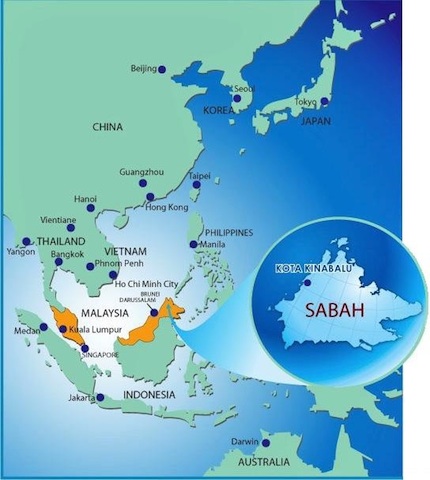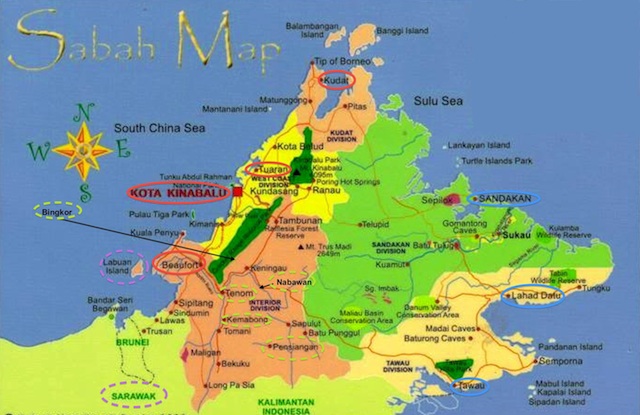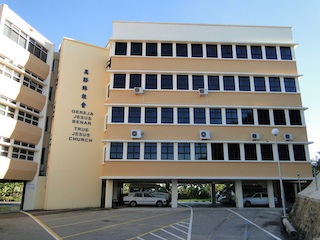General Assembly of Sabah After the True Jesus Church’s establishment in China in 1917, the gospel spread to Taiwan, Singapore, and subsequently to Sabah, which was then known as North Borneo. Although Sabah is now part of Malaysia, it has its own General Assembly due to historical developments and geographical reasons. In this article, we will present the history of the True Jesus Church in Sabah and give an overview of its current status. BRIEF HISTORY 1920s In 1927, two True Jesus Church deacons from West Malaysia visited Singapore; one of them, Deacon (Dn.) John Vun, sent a copy of the Holy Spirit Monthly magazine to Sabah (formerly known as North Borneo, a British colony). The magazine came into the possession of a pious believer from the Seventh Day Adventist church. His name was Lee Siak Lin who became the first seed of the True Jesus Church in Sabah. Filled with zeal after reading the Holy Spirit Monthly, Lee Siak Lin boarded a ship to Singapore to look for Dn. Vun to study the truth. Once he understood, he accepted the truth and was baptized. He then invited Dn. Vun to preach the gospel in Sabah. Dn. Vun obliged and together with a few co-workers, they sailed to Sabah. While in Sabah, they witnessed the amazing work of the Holy Spirit. Miracles and signs abounded. A person crushed to death by a big tree was revived after prayers. Every night believers went to a mountain to pray and hold services. Many received the Holy Spirit. Through the power of the Holy Spirit, many believed in the Lord in those early days; the number of believers soon exceeded five hundred. The gospel spread rapidly to the Chinese community. By 1930, eight churches and prayer houses had been established. 1930s In 1934, a Chinese businessman by the name of Chin Chin Chan (Dn. John Chin) from Tuaran, on the West coast of Sabah, took his twelve-year-old son to Fuzhou, China, to learn Chinese. There, he came to believe in the Lord and was baptized in the True Jesus Church in Dagen, Fuzhou. In 1935, he returned to Sabah and immediately put up a True Jesus Church signboard above his shop. He started preaching the gospel and held services at his shop every night. Around thirty-five people attended services at that time. During that period, Dn. Chin contracted severe tuberculosis. He prayed and vowed that if God healed him, he would become a full-time evangelist. Miraculously, he was cured. Dn. Chin kept his word and traveled extensively to preach the gospel. His son, Dn. Samuel Chin, one of our early workers, also became an evangelist. Dn. Samuel Chin’s wife was from the Dusun tribe, the largest indigenous tribe in Sabah. Through her contacts, the gospel was preached to her relatives in the Dusun dominated areas. In 1936, the first indigenous church was established. Through the working of the Holy Spirit, the gospel was subsequently preached to other indigenous tribes, such as the Murut tribe, in the interior regions of Sabah. 1940s–1950s During the Second World War, between 1942 and 1945, the church ceased to hold services; believers had to flee from the Japanese soldiers and went into hiding. Yet, by God’s grace, the believers continued to gather and hold family services. 1960s–1970s In the 1960s and 1970s, the church in Sabah experienced rapid growth. From 1964 to 1965, the General Assembly of Taiwan sent Dn. John Yang and Dn. Lin Feng Lai to Sabah to assist in the holy work. These two early workers helped to establish the foundation of the pastoral and evangelistic work in Sabah; their main contribution being the cultivation of religious education teachers. If we look back at the history of the church in Sabah, we can see that God has especially blessed the local religious education work. Many of our current ordained ministers, both preachers and deacons, were religious education teachers trained by Dn. John Yang in the 1960s and 1970s. Administration and Facilities In 1927, when the true church was first established in Sabah, it was under the administration of the General Assembly (GA) of mainland China and was known as the “North Borneo Branch” with its liaison center in Sandakan. In 1945, after the Second World War, the state capital of North Borneo was relocated from Sandakan to Jesselton (now Kota Kinabalu) by the government. Various church denominations were advised to re-register with the authorities. In 1952, our church also re-registered as the “Branch Board of the True Jesus Church” under the administration of the General Assembly of Mainland China, with its office at Jesselton. In 1975 Sabah officially established its own General Assembly. In 1981, the Kota Kinabalu church constructed a five-storey administrative building. As Sabah GA was without a proper office at the time, it shared an office with the Kota Kinabalu church. In 2009, the Sabah GA constructed its own five-storey administrative building, with facilities such as a theological seminary, conference hall, library, hostel, and multipurpose hall. CURRENT SITUATION The Churches 
Membership and Workers

The Three Pastoral Zones
In order to facilitate pastoral and evangelistic work, the Sabah churches are divided into three pastoral zones: West Coast Zone, East Coast Zone, and Interior Zone. The West Coast Zone consists of four sub-zones, Beaufort in the south-west, Kudat in the most northern part of Sabah, Tuaran in the north-west, and Kota Kinabalu, the state capital. Although the last three sub-zones do not occupy large geographical areas, they have the highest number of believers and churches, and their congregations comprise members of Chinese origin and from indigenous tribes. Most of our churches in Sabah are situated in the West Coast Zone, and eleven preachers are assigned to take care of this zone. The East Coast Zone is located in the eastern region of Sabah. There are fewer churches there. The churches are very far from one another, but they have large congregations. Hence, there are a number of large church buildings in the East Coast Zone. This zone is divided into three sub-zones: Sandakan, Lahad Datu, and Tawau. The Interior Zone is divided into five sub-zones: Bingkor, Tenom, Kemabong, Nabawan, and Pensiangan. Bingkor and Tenom are the only two areas with Chinese brethren in the Interior Zone. Pensiangan is located in a very remote region of Sabah, near the border of Indonesia. Beyond the shores of Sabah, the GA also cares for the churches in the neighboring Malaysian state of Sarawak as well as a small island called Labuan, which is under the management of Malaysia’s Federal Territory. Sarawak is the largest state in Malaysia, with a population of 2,470,000. Over 75% of the population are Christians, and there are many Chinese who speak the Minnan and Fuzhou dialects. Yet we have only two prayer houses in this state. Hence, it is our vision to mobilize more manpower to pioneer the gospel in the state of Sarawak and to save more souls for the Lord.

Position of Sabah in South-East Asia

The Pastoral Zones of Sabba

True Jesus Church Kota Kinabalu
| 

